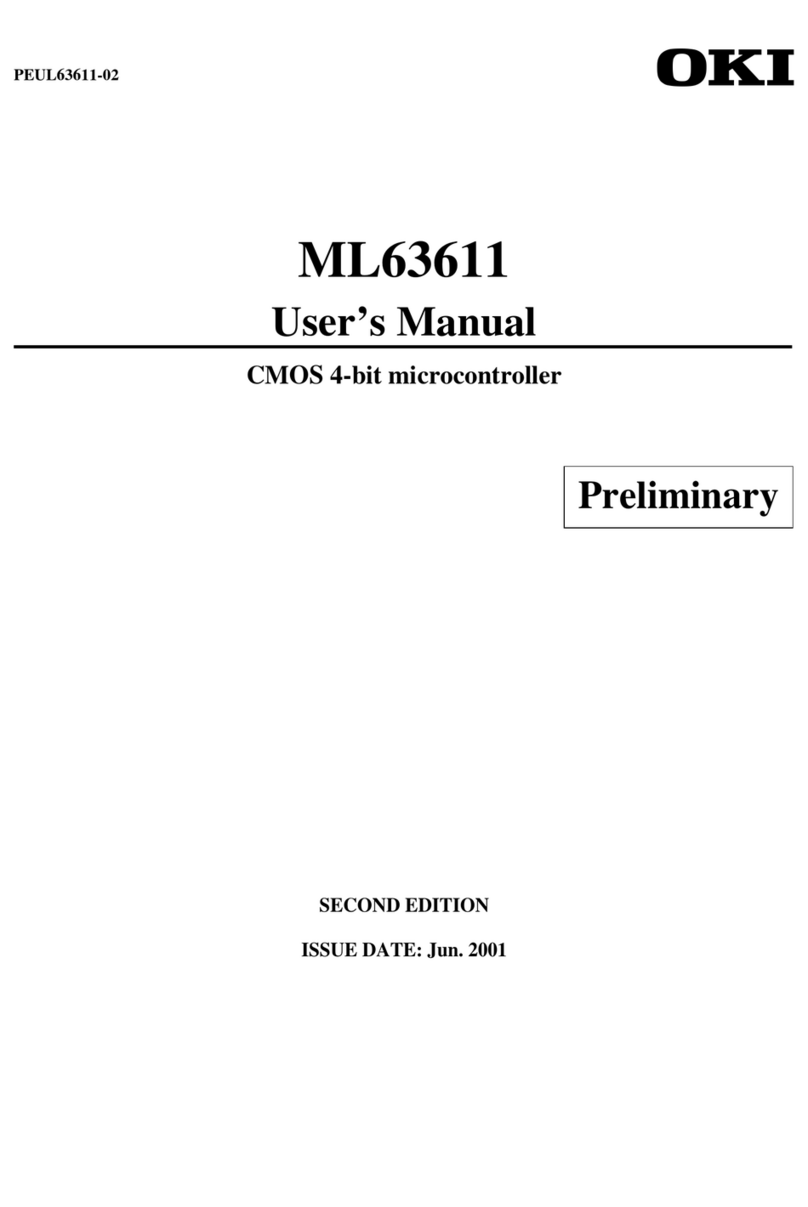Contents-5
11.4 Type A2 Register Modules (TMR14, TMR15) ...........................................11-17
11.4.1 Configuration of Type A2 Register Modules (TMR14, TMR15) ............11-17
[1] Timer Registers (TMR14, TMR15) .........................................................11-17
[2] Capture Control Register (CAPCON) .....................................................11-18
[3] Event Control Register 2 (EVNTCON2)..................................................11-19
[4] Event Dividing Counters 14, 15 (EVDV14, EVDV15) .............................11-20
[5] EVDV14, EVDV15 Buffer Registers (EVDV14BF, EVDV15BF) .............11-20
11.4.2 Operation of Type A2 Register Modules (TMR14, TMR15) .................11-21
11.4.3 Capture Pin Dividing Circuit..................................................................11-22
[1] Configuration of Dividing Circuit .............................................................11-22
[2] Operation of Dividing Circuit ...................................................................11-22
[3] Operation to Switch Dividing Ratio .........................................................11-22
11.5 Type B Register Modules (TMR4–TMR13) ...............................................11-23
11.5.1 Configuration of Type B Register Modules (TMR4–TMR13) ................11-23
[1] Timer Registers (TMR4–TMR13) ...........................................................11-24
[2] Timer Register Buffer Registers (TMR4BF–TMR13BF) .........................11-24
[3] Real-time Output Control Registers (RTOCON4–RTOCON13) .............11-24
11.5.2 Operation of Type B Register Modules (TMR4–TMR13) .......................11-26
11.6 Type D Register Module (TMR17).............................................................11-27
11.6.1 Configuration of Type D Register Module (TMR17) .............................11-27
[1] Timer Register (TMR17) .........................................................................11-29
[2] Real-time Output Control Registers (RTOCON17, RTO4CON) .............11-29
[3] TMR Mode Register (TMRMODE)..........................................................11-31
[4] Capture Control Register (CAPCON) .....................................................11-32
11.6.2 Operation of Type D Register Module (TMR17) ...................................11-33
[1] Operation in Real-time Output Mode (RTO) ...........................................11-33
[2] Operation in 4-Port Output Real-time Output Mode (4-Port RTO)..........11-34
[3] Operation in CAP Mode..........................................................................11-35
11.7 Type E Register Module (TMR16) .............................................................11-36
11.7.1 Configuration of Type E Register Module (TMR16)..............................11-36
[1] Timer Register (TMR16) .........................................................................11-37
[2] Real-time Output Control Register (RTOCON16)...................................11-37
[3] TMR Mode Register (TMRMODE)..........................................................11-38
[4] Capture Control Register (CAPCON) .....................................................11-39
11.7.2 Operation of Type E Register Module (TMR16) ...................................11-40
[1] Operation in Real-time Output Mode (RTO) ...........................................11-40
[2] Operation in CAP Mode..........................................................................11-40
11.8 RTO Mode Output Timing Changes ..........................................................11-41




























